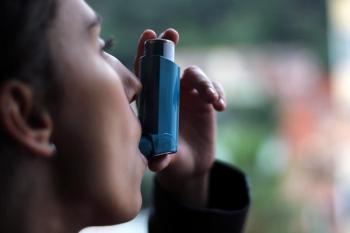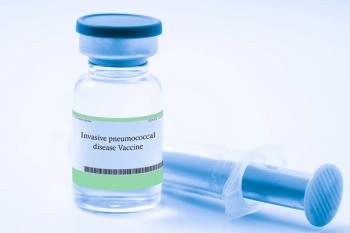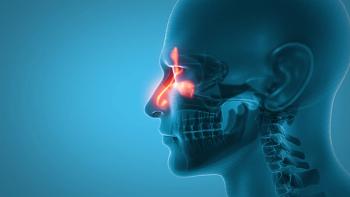
- Drug Topics October 2020
- Volume 164
- Issue 10
Combatting the Common Cold
Help patients with upper respiratory infections choose an OTC product that’s right for them.
The common cold may be considered a mild illness, but the runny nose, congestion, sneezing, cough, sore throat, headache, and other symptoms that come along with it can make people feel miserable. OTC products to treat upper respiratory infections are not a cure; at best, they provide temporary symptom relief. And yet, US consumers, desperate for reprieve from cold-related discomfort, spent more than $9 million last year on these products, according to the Consumer Healthcare Products Association.1
Pharmacists play an important role in helping patients choose the appropriate OTC product based on patient characteristics and specific cold symptoms.
INGREDIENT REVIEW
Although a plethora of OTC cough and cold medications are on phar- macy shelves, many of them are very similar. Most oral cold medications contain a combination of some or all of the following active ingredients:
- Acetaminophen for relief of fever, sore throat, headache, and body aches
- Decongestant phenylephrine for the relief of nasal congestion and runny nose
- A first-generation antihistamine such as diphenhydramine, pheniramine, chlorpheniramine, or brompheniramine to reduce postnasal drip and help with sleep
- Cough suppressant dextromethorphan
- Expectorant guaifenesin, which thins mucous secretions in respiratory passages so they can more easily be coughed up
Various products are available in tablet and/or syrup form. Some products, such as the Theraflu line, are available as packets of powder to be mixed into a hot drink—an added benefit because hydration, particularly with hot liquids, helps relieve cold symptoms. Nasal sprays are also an option; some nasal sprays contain decongestants such as oxymetazoline and phenylephrine, whereas saline nasal sprays serve to simply moisten the nasal passages to reduce irritation.
CUSTOMIZED COMBINATIONS
Although most combination drugs contain the same basic active ingredients, the number of different formulations on the shelf can be dizzying. Various brand names such as Mucinex, Robitussin, and DayQuil/ NyQuil each include several different products for relief of different symptoms. Descriptors can include “cough and cold,”“cold and flu,” and “cough and chest congestion”—sometimes with the word “severe” thrown in for good measure. Many of these are available in daytime and nighttime formulations, which are often packaged together in 1 box.
Mainstay ingredients for daytime cold and flu formulations are usually acetaminophen for fever and pain, phenylephrine for congestion, dextromethorphan for cough suppression, and guaifenesin for loosening secretions. Nighttime formulations for cold and flu typically omit guaifenesin, which can increase coughing, replacing it with dextromethorphan to suppress the cough or an antihistamine to promote drowsiness.
But never make assumptions about what’s in a particular product—the active ingredient or its dosage. For instance, although most combination products contain 325 mg of acetaminophen, some contain 650 mg. Dosages of dextromethorphan and guaifenesin also vary among products. Always check the label to be sure.
PEDIATRIC CONSIDERATIONS
Although young children are notorious for frequently acquiring colds, they are not always the best candidates for treatment with OTC cold medicines. The FDA states that OTC cold medicines containing decongestants or antihistamines should not be used for children under aged 2 years, as they can cause serious adverse effects (AEs).2 The American Academy of Pediatrics (AAP) states that OTC cold medications should not be used in children under aged 4 years due to the risk of dangerous AEs; research has shown little benefit in children under aged 6 years.3
Various products are designed for children, and most state on the packaging that they are for children aged 6 years and older. Children under 12 years of age should not take adult formulations of cough and cold medications, as the dosages may be inappropriate for them.
Caution parents buying pediatric products to keep them out of children’s reach, as accidental, unsupervised ingestion is a leading cause of AEs with these drugs.4
For children who should not or prefer not to take OTC medications, the AAP recommends using cool mist humidifiers and administering saline nose drops, with a nasal aspirator for infants. Mentholated rubs can help soothe nighttime coughs, and single-ingredient acetaminophen or ibuprofen can be used for fever. There is evidence of honey providing relief for upper respiratory infections, and it is a safe option for children older than 1 year. Babies under 1 year of age should never be given honey due to risk of infant botulism. The AAP recommends half a teaspoon of honey for children aged 1 to 5 years, 1 teaspoon of honey for children aged 6 to 11 years, and 2 teaspoons of honey for children aged 12 years and older. Parents should be cautioned to brush the children’s teeth after taking honey before bedtime.3
PRECAUTIONS AND SPECIAL POPULATIONS
Patients’ awareness of what is contained in the OTC combination cold medications they’re taking is key to ensuring that they don’t accidentally overdose. They should especially be cautioned not to take more than 1 acetaminophen-containing product at a time, as acetaminophen overdose is a leading cause of acute liver failure. Although historically the maximum daily dose of acetaminophen was 4000 mg, the makers of Tylenol have lowered the maximum daily dose of single ingredient Tylenol to 3000 mg/day to promote safe use of acetaminophen products.5
Since systemic and nasal decongestants work by causing vasoconstriction, they can worsen conditions such as hypertension, glaucoma, and benign prostatic hyperplasia. Patients with these conditions should be directed to formulations labeled “HBP” for high blood pressure or any other products that do not include decongestants.
Special care should be taken for patients taking monoamine oxidase (MAO) inhibitors, as they interact with several components of cough and cold medications. The use of decongestants with MAO inhibitors can cause hypertensive crisis, and dextromethorphan with MAO inhibitors can cause serotonin syndrome.
Patients should be reminded that nighttime formulations containing antihistamines cause drowsiness, so they should only be taken at bedtime—not before driving a vehicle or operating dangerous machinery.
THE IMPORTANCE OF READING LABELS
Because there is so much variability between products, reading labels for cough and cold medications is essential to making proper patient-specific recommendations. For example, while Corcidin HBP and DayQuil HBP are similar in that neither contain decongestants, they do not contain the same ingredients; Corcidin HBP Cold & Flu contains acetaminophen and chlorpheniramine, whereas Dayquil HBP Cold & Flu contains acetaminophen and dextromethorphan.
Suffixes can be confusing. Although HBP in a drug name indicates that it is safe for patients with high blood pressure, the DM in some Robitussin products does not indicate that they are formulated for patients with diabetes mellitus. Instead, the DM in those products indicates that they contain dextromethorphan. Patients with diabetes should be directed to cough formulations that do not contain glucose, such as Diabetic Tussin. And the CF in other Robitussin products stands for cough/cold formulation, although those products also contain dextromethorphan.
Careful consideration may sometimes lead to the conclusion that patients might be better off with
a single ingredient drug, such as acetaminophen, ibuprofen, or a second-generation antihistamine.
References:
- OTC sales by category 2016-2019. Consumer Healthcare Products Association. Accessed September 10, 2020. https://www.chpa.org/OTCsCategory.aspx
- Use caution when giving cough and cold products to kids. FDA. Updated February 8, 2018. Accessed September 10, 2020. https://www.fda.gov/drugs/special-features/use-caution-when-giving-cough-and-cold-products-kids
- Caring for your child’s cold or flu. HealthyChildren. Updated April 19, 2019. Accessed September 10, 2020. https://www.healthychildren.org/English/safety-prevention/at-home/medication-safety/Pages/How-to-Manage-Colds-and-Flu.aspx
- Green JL, Wang GS, Reynolds KM, et al. Safety profile of cough and cold medication use in pediatrics. Pediatrics. 2017;139(6):e20163070. doi:10.1542/peds.2016-3070
- Tylenol dosage for adults. Tylenol. Accessed September 10, 2020. https://www.tylenol.com/safety-dosing/usage/dosage-for-adults
- Cold versus flu. CDC. Updated August 31, 2020. Accessed September 14, 2020. https://www.cdc.gov/flu/symptoms/coldflu.htm
- Similarities and differences between flu and COVID-19. CDC. Updated August 31, 2020. Accessed September 14, 2020. https://www.cdc.gov/flu/symptoms/flu-vs-covid19.htm
Articles in this issue
about 5 years ago
Mask Wearing: A Small Sacrifice for the Greater Goodabout 5 years ago
Breast Cancer Pain Management Optionsabout 5 years ago
Pharmacists Offer Tips on Weight Management in Diabetesabout 5 years ago
Election 2020: What Pharmacy Needs from the Next Administrationabout 5 years ago
Celebrate the Pharmacy ProfessionNewsletter
Pharmacy practice is always changing. Stay ahead of the curve with the Drug Topics newsletter and get the latest drug information, industry trends, and patient care tips.






































































































































